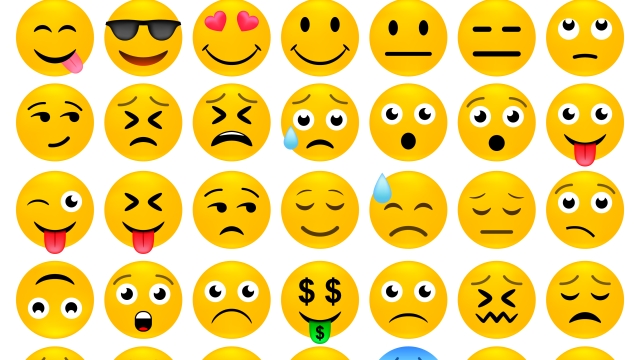Unlocking Emotions: The Magic of AI Emoji Generation

In today’s digital landscape, communication is evolving at an unprecedented pace, and emojis have become a universal language of their own. They help convey emotions, reactions, and sentiments in ways that words sometimes cannot. With the rise of artificial intelligence, the world of emojis has taken a significant leap forward, allowing for more personalized and expressive representations of feelings. The introduction of AI emoji generators marks a fascinating intersection of technology and creativity, enabling users to create unique emojis that resonate with their individual experiences.
These innovative tools harness the power of AI to analyze various inputs, such as text descriptions or even user-uploaded images, and transform them into customized emojis. This process not only enhances personal communication but also opens the door to new avenues of expression. As we delve deeper into this topic, we will explore how AI emoji generators work, their impact on our interactions, and the exciting possibilities that lie ahead in the realm of digital emotions.
The Science Behind Emoji Generation
Personalized emojis for social media
The development of AI emoji generators relies on various machine learning techniques that analyze vast datasets of images and emotions. These models are trained on labeled images where specific emotions are linked to particular visual characteristics. By examining patterns and relationships within this data, the AI learns to interpret human feelings and express them visually through emoji designs.
Natural language processing also plays a crucial role in emoji generation. AI systems can analyze text input to detect emotions based on word choice and context. This ability enables the AI to suggest emojis that align with the conveyed sentiments. By integrating linguistic analysis with image synthesis, these generators provide a more personalized and accurate representation of emotions.
Moreover, advancements in neural networks, particularly GANs or Generative Adversarial Networks, have improved the quality and diversity of generated emojis. These networks consist of two models—the generator and the discriminator—working together to create high-quality images. This competition fosters the evolution of unique and engaging emoji designs that resonate with users, making communication richer and more expressive in the digital space.
Impact of AI on Emotional Expression
AI has revolutionized the way we communicate emotions, especially through the use of emojis. With the advent of AI emoji generators, users can now express complex feelings more accurately and creatively. These generators analyze textual inputs and convert them into visual representations that resonate with users’ emotional intents. This capability enhances communication in a digital landscape where tone and intent can often be lost in translation.
The personalized nature of AI-generated emojis allows individuals to break free from the constraints of traditional emoji sets. Users can create unique emojis that reflect their specific emotions, experiences, or cultural backgrounds. This innovation fosters a more inclusive form of communication, as people can now visually articulate their feelings in ways that standard emojis may not cover. The result is a richer tapestry of emotional expression that promotes empathy and understanding among diverse audiences.
Furthermore, the incorporation of AI in emoji generation not only broadens emotional vocabulary but also responds to the evolving nature of communication. As our conversations become increasingly digital and nuanced, AI can adapt by learning from user interactions. This means that emojis will continue to develop alongside our emotional language, making them an essential tool for conveying sentiments in a fast-paced, visually-oriented world.
Applications of AI Emoji Generators
AI emoji generators have found a variety of applications across different platforms and industries, transforming the way people communicate. In social media, users can create personalized emojis that reflect their emotions or reactions more accurately than standard emojis. This customization fosters a greater sense of connection and individuality, allowing users to express themselves uniquely in their posts and comments.
Additionally, businesses have begun utilizing AI emoji generators in their marketing strategies. By creating tailored emojis to represent their brands, companies can engage their audience more effectively and enhance their brand identity. Emojis that resonate with target demographics can drive higher interaction rates and create a more relatable brand image, making communication more approachable and appealing to consumers.
In educational settings, AI emoji generators can aid in improving communication between teachers and students. They can be used to make learning materials more engaging and interactive. Educators can employ custom emojis to convey emotions related to feedback or to represent concepts in a fun, relatable way. This approach not only makes learning more enjoyable but also helps to convey nuanced feelings that may be missed in written text alone.
Future Trends in Emoji Technology
As AI emoji generation continues to evolve, one significant trend is the enhancement of personalization. Future emoji generators will likely incorporate deeper learning algorithms that analyze users’ communication styles, preferences, and emotional expressions. This means emojis will be tailored to reflect not only individual tastes but also contextual emotions and situations, making conversations more expressive and engaging.
Another exciting development is the integration of augmented reality with emoji technology. Imagine being able to generate emojis that not only exist in your text but also come to life in your environment through AR applications. Users could project their personalized emojis onto their surroundings, enabling interactive experiences that combine virtual and real-world elements, making digital communication feel more immediate and vibrant.
Finally, the continued globalization of emoji usage will lead to a push for greater cultural representation in AI-generated emojis. Future technologies will address the need for diverse symbols that resonate across different cultures and communities. This inclusivity will ensure that users everywhere can express their emotions in ways that are meaningful and relevant to their backgrounds, fostering a more connected and understanding global community.
